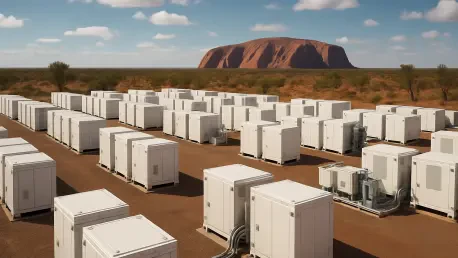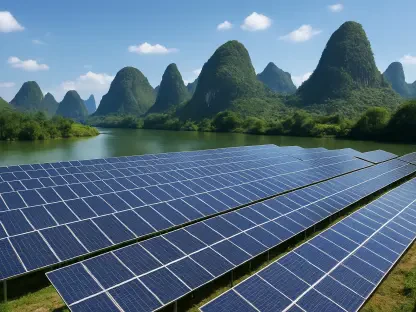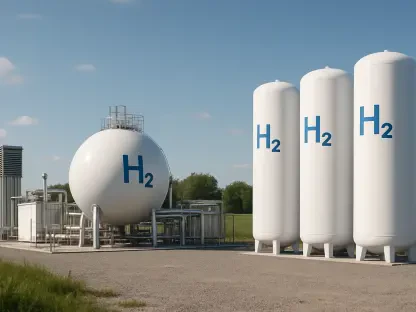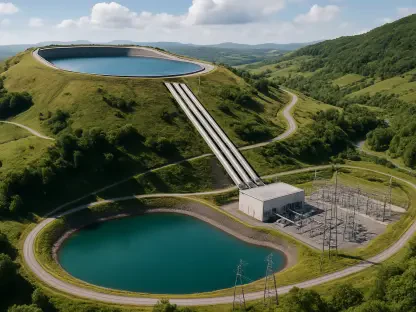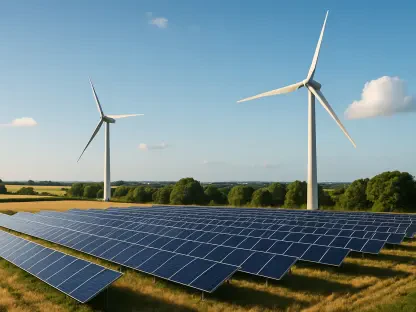I’m thrilled to sit down with Christopher Hailstone, a seasoned expert in energy management and renewable energy, to discuss one of Australia’s most ambitious projects, Snowy 2.0. With a deep background in electricity delivery and grid reliability, Christopher offers a unique perspective on how this massive pumped hydro initiative is set to transform Australia’s energy landscape. In our conversation, we’ll explore the project’s purpose and significance, dive into its innovative energy storage capabilities, address concerns about costs and performance, and unpack its role in reducing reliance on fossil fuels as the nation shifts toward a cleaner, more sustainable future.
Can you give us a broad picture of what Snowy 2.0 is and why it’s such a critical piece of Australia’s energy puzzle?
Absolutely, Emilia. Snowy 2.0 is a massive expansion of the original Snowy Hydro Scheme, a postwar engineering marvel. It’s essentially a giant pumped hydro project that connects two existing reservoirs with a 27-kilometer tunnel and an underground hydropower station. The purpose is to provide large-scale energy storage for Australia’s grid. As we transition to renewables like solar and wind, which are variable by nature, we need a way to store excess energy for when the sun isn’t shining or the wind isn’t blowing. Snowy 2.0 is being built to meet that need, ensuring a reliable power supply as coal generation declines and we aim for 82% renewable electricity in just a few years.
How does Snowy 2.0 build on the legacy of the original Snowy Hydro Scheme?
The original scheme was a groundbreaking project that harnessed the power of water in the Snowy Mountains to generate electricity and support irrigation. Snowy 2.0 takes that foundation and modernizes it with a focus on storage. It uses the same principles of hydropower but adds the ability to pump water uphill during times of surplus energy and release it downhill to generate power when demand is high. It’s integrated into the existing Tumut River system, which has multiple reservoirs and hydropower stations, giving it incredible flexibility to manage water and energy needs. It’s like upgrading a classic car with cutting-edge technology while keeping its original strength.
There’s been significant discussion about the project’s cost, which has risen from $6 billion to over $12 billion, with estimates now between $15 and $18 billion. How do you view these escalating costs in the context of the project’s value?
I understand the sticker shock, Emilia, but we need to look at the long-term picture. Snowy 2.0 is a 150-year asset, not a short-term fix. When you break down the cost, it’s roughly one cent per day per Australian over that lifespan. That’s a small price for a system that will provide stability to our grid as we shift to renewables. The cost overruns stem from complex engineering challenges and inflation, but the value lies in its scale—offering storage capacity five times greater than all other pumped hydro and grid batteries combined in Australia. It’s an investment in energy security and sustainability that will pay dividends for generations.
Can you explain what Snowy 2.0’s energy storage means for everyday Australians who might not think about the grid on a daily basis?
Of course. For the average person, Snowy 2.0 means a more reliable and affordable power supply, especially as we rely more on renewables. It can store 350 gigawatt-hours of energy—think of it as the equivalent of 7 million electric vehicle batteries. When solar and wind produce more power than we need, like on sunny or windy days, Snowy 2.0 stores that energy by pumping water uphill. Then, during peak demand times like evenings or when renewables aren’t generating, it releases the water to produce electricity. This helps avoid blackouts, reduces the need for expensive fossil fuel backups, and ultimately keeps electricity bills in check for households.
How does the actual mechanism of Snowy 2.0 work to store and generate energy?
It’s a fascinating process. Snowy 2.0 operates on the principle of pumped hydro. When electricity is cheap or abundant—say, during the middle of a sunny day with lots of solar power—water is pumped from the lower reservoir to the upper one, storing energy in the form of gravitational potential. Then, when demand spikes or supply drops, the water is released back down through turbines in the underground station, generating electricity as it flows. This cycle can repeat, making it a reusable battery of sorts. The system’s design ensures it can respond quickly to grid needs, providing power for hours or even a full week if necessary.
Skeptics have raised concerns about whether Snowy 2.0 can deliver on its promises due to potential limitations in moving water around the system. What’s your take on these doubts?
I get why there’s skepticism—any project this big invites scrutiny. But I’m confident in Snowy 2.0’s potential. The Tumut River system, which underpins the project, has five interconnected reservoirs with a capacity 30 times larger than what Snowy 2.0 requires. Add to that six hydropower stations, and you’ve got a lot of flexibility to manage water flow. There are always challenges in a system this complex, but the design accounts for them. I believe it will meet its goals of providing both energy storage and generation, acting as a cornerstone for grid reliability as we phase out older, less flexible power sources.
You’ve highlighted that Snowy 2.0 will help reduce Australia’s reliance on gas power. Can you elaborate on how that shift will play out?
Certainly. Gas has been a go-to for meeting sudden demand because it can ramp up quickly, but it’s expensive and emits carbon. Snowy 2.0, alongside grid batteries, offers an alternative. It can cover long-duration needs, like overnight demand, by releasing stored water to generate power for extended periods. Meanwhile, batteries handle short, sharp peaks in the morning and evening. Together, they reduce the need for gas-fired plants, especially as gas prices have skyrocketed since exports began. This duo of pumped hydro and batteries can stabilize the grid and push gas out of the mix, paving the way for a cleaner energy system.
What role do you see grid batteries playing alongside a giant like Snowy 2.0 in this energy transition?
Grid batteries and Snowy 2.0 are complementary, not competitors. Batteries are fantastic for quick bursts of power—they can discharge at high rates to cover brief peak demand periods, like early evenings when solar drops off. They’ve already taken a huge share of grid stabilization services in Australia over the past few years. Snowy 2.0, on the other hand, excels at long-duration storage, providing energy over hours or days when renewables are scarce. It can even recharge batteries during low-demand periods. This teamwork means we can meet diverse grid needs without leaning on fossil fuels, maximizing the use of cheap, clean energy.
Looking ahead, what’s your forecast for the impact of Snowy 2.0 and similar projects on Australia’s journey to a fully renewable energy grid?
I’m optimistic, Emilia. When Snowy 2.0 comes online around 2028, it will be a game-changer, proving that large-scale storage can support a grid dominated by renewables. Its ability to store vast amounts of energy and generate power for extended periods will help displace coal and gas, especially for overnight demand. If we build more pumped hydro systems—Australia has thousands of potential sites—we could realistically eliminate fossil fuels from our electricity mix. Combined with batteries and smarter grid management, projects like Snowy 2.0 could get us to a 100% renewable grid much sooner than many expect, ensuring energy security and slashing emissions along the way.
